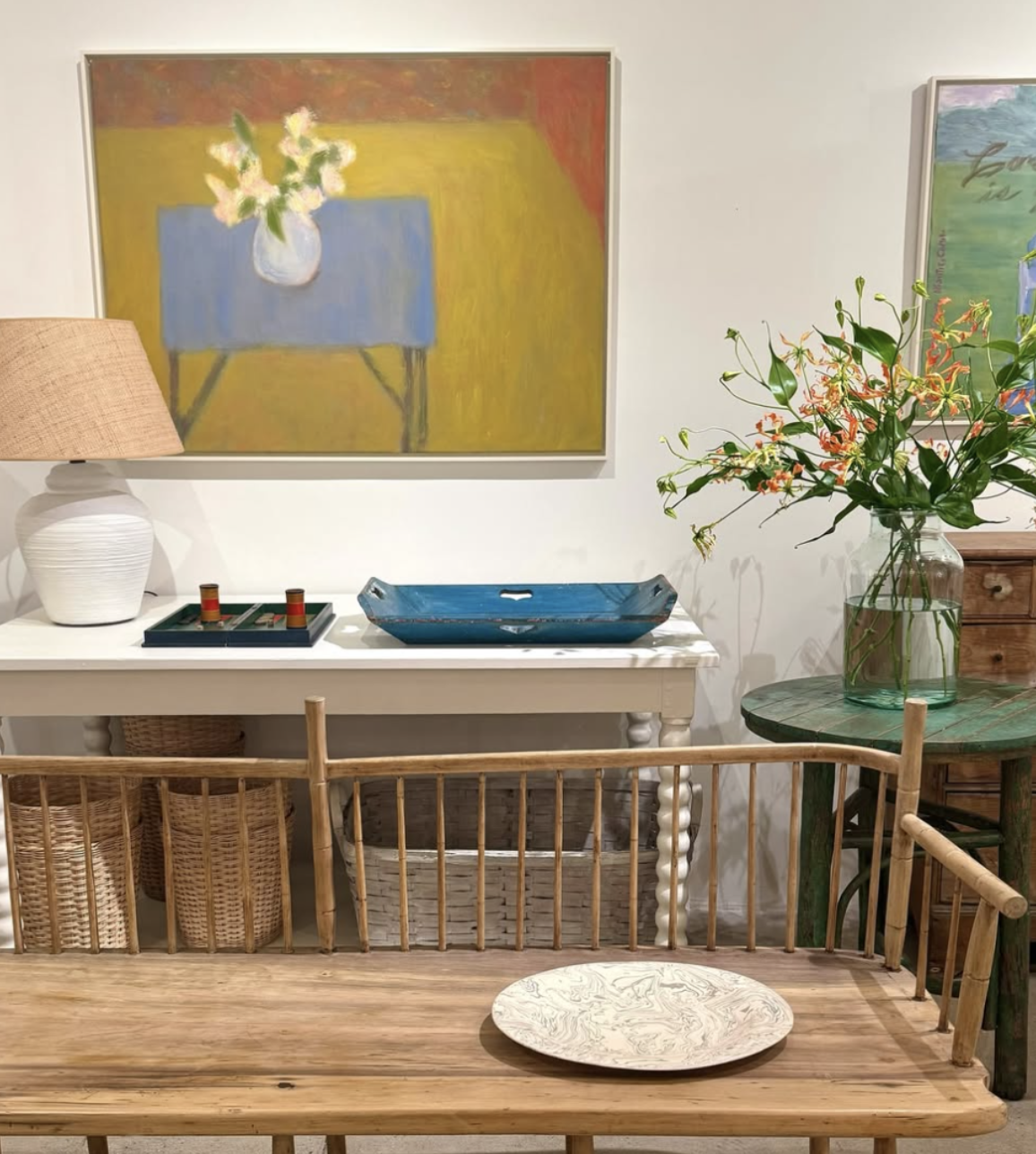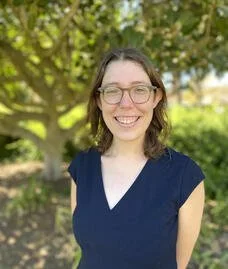November 2025 News
How do you measure a year?
“525, 600 minutes….?
In daylights, sunsets, midnights, or in cups of coffee? …” — songwriter, Jonathan Larson
Thank you for joining in on another year with us - either from afar in pixels, or here in real life, inside the James Stevenson Lost and Found Lab for our Open Studio gatherings, or outside around the firepit listening to the screech owl at dusk…
The calendar at Lost and Found Lab does move at a spirited clip – set by the one-month comings and goings of six different artists each year. If there were a stop-action camera set up inside the Lab studio, you would see a repeating loop of the big orange door slowly swinging open, with another intrepid soul sliding inside, a suitcase rolling behind – assessing the layout of the studio space, or library writing table – and within moments, like a creature gurgling back to life, another chapter of generative and focused creativity commences. It really is extraordinary.
Recently we’ve had the remarkable visual poet Monica Ong with us, who, while at the Lab, used the studio to begin crafting a series of Pantone Book-like inspired poetry assemblies, playing off the familiar layout of color swatch books recognizable to any of us who have contemplated color combinations. Her work turns the art of poetry into tangible objects to behold for every curious reader. During her residency, Monica’s poetry readings took place throughout Connecticut and the New York City metro area, as well as every corner inside the Lab.
Following Monica, painter Michael Cline joined us in the month of September… bringing his detailed and studied approach to landscape painting - with a dash of surrealism. While at the Lab, Michael began a new work on canvas, and transformed the studio into a cabinet of curiosities - staged with an assortment of curious and familiar objects that have long fueled his imagination.
We’ve also been enjoying these past few months, seeing Jim Stevenson’s rarely viewed oil paintings emerge out into the world, thanks to the creative alchemy at Tori Jones Studio. Over the summer, Jim’s paintings were featured at the Tori Jones Studio shop on Block Island, and again this fall in Manhattan at the New York Design Studio. Many guests encounter Jim’s works on canvas when visiting Lost and Found Lab — it’s terrific to see these pieces now finding new homes and reaching wider audiences.
And lastly, a hearty thanks to old and new friends who joined us on a sunny October Saturday for an afternoon of whittling around the fire pit. The gathering was led by local ceramic artist and whittling enthusiast Keith Simpson, who guided us with ease and encouragement as we transformed branches and blocks of wood into clothing hooks, cheese knives, and spatulas (!!) There was something about sitting outside together, learning a hands-on craft while sitting beside the fire on an autumn day that just felt like the right thing to do. Here’s to hoping for more of that in the future. Thanks, Keith! That was fun.
As we close another year out at Lost and Found Lab, we turn to welcoming the next impressive lineup of artists slated for 2026. Here they are, and we hope you can join us for their open studio gatherings throughout the year ahead.
All of us at the James Stevenson Lost and Found Lab wish you well as you march towards the holiday season ahead. We’ll be back with more updates after we attend this year’s Artist Communities Alliance Conference out in Santa Fe, NM this December.
UPCOMING LOST AND FOUND LAB ARTISTS-IN-RESIDENCE | 2026
Elvira Clayton is a Harlem-based multimedia artist whose practice spans installation, performance, sculpture, assemblage, collage and textile work. Drawing deeply on ritual, matriarchal lineage and the legacies of American slavery, her works serve as “ritualistic vessels” that hold the stories of forgotten ancestors and invite viewers into a lived history. Often incorporating craft and textile, her work is anchored in honoring her own enslaved ancestors and exploring the complex interplay of personal memory, cultural heritage and communal trauma while inviting reflection on identity, history and resilience. While at the Lab, she will be researching and creating work for her ongoing project 436, a large-scale installation informed by a 1859 slave auction catalog.
David A. Miller is a theatre artist, educator and director currently serving as a tenured Professor in the Division of Theatre & Dance at Bloomsburg University, where he teaches courses in directing, acting, playwriting and career seminars. Beyond the classroom work, Miller is deeply involved in new-play development: he founded and leads the “Plays in Bloom” residency program at Bloomsburg, mentoring playwrights and directing workshops of emerging works. With a practice that spans directing productions, writing original plays, and shaping theatre pedagogy, Miller’s work emphasizes collaborative creation, mentorship, and innovative models of theatre-making. I intend to explore the intersection between color and language through playwriting and visual art. During his residency, one project will include developing his play Mystic in the Savage State, which centers on the earliest studies of color-hearing in the United States.
Allison Caplan is an Assistant Professor of Art History at Yale University specializing in the art of Late Postclassic and early colonial Mesoamerica, especially the Nahuas (Aztecs) of Central Mexico. Her research explores Nahua aesthetics, material value, and the relationship between language and visual culture. Her first book, Flickering Creations: Concepts of Nahua Precious Art (Princeton University Press, forthcoming 2026), examines Indigenous theories of beauty and craftsmanship in featherwork, gemstones, and metals. Her current project analyzes how colonial collaborations between Nahua and Spanish writers, scribes, artists, and translators over three decades fundamentally shaped and transformed the General History of the Things of New Spain (ca. 1559–1585), a monumental, illustrated encyclopedic study of Nahua culture, language, and art. During her time at the Lab, Allison will be working on early modern manuscript production.
Michelle Maguire works as an archivist at the Billy Ireland Cartoon Library & Museum, a wonderful, robust and invaluable research collection bursting with books and periodicals, original art, newspaper tear sheets, fan mail/hate mail, journals/diaries/sketchbooks—anything that helps to paint a picture of the life of a cartoonist. She is a collector of mass-produced printed ephemera, including homespun CB radio cards, business cards, menus, napkins, and postcards containing squeakers. Maguire is also a visual artist whose work often takes on book form—her self-published, small-edition books that draw from family anecdotes, personal memories, and everyday observations have achieved institutional recognition, being held in the permanent collections of major universities and museum libraries.
A 2023 New York Public Library Picture Collection Artist Fellow, her work has in recent years become more research-based: “As soon as I started working that way I was hooked. I enjoy all of the different directions I'm taken when digging through an archive, relying on and trusting chance and intuition, as well as an openness to connection and surprise. There’s nothing like the thrill of seeing where the hunt takes you. I feel extremely lucky to be able to spend a nice chunk of time in the Lab, and the ties to nearby research collections that come along with it."
Doug Dreishpoon has been a practicing musician (drummer/percussionist) for more than 50 years. His residency at the Lost and Found Lab will catalyze a series of compositions—vocal/instrumental soundscapes. Currently serving as the director of the Helen Frankenthaler Catalogue Raisonné project, Dreishpoon is chief curator emeritus at the Buffalo AKG Art Museum in New York, and a consulting editor at the Brooklyn Rail. His recent publications include Modern Sculpture: Artists in Their Own Words and Helen Frankenthaler: Late Works, 1988‑2009, both released in 2022.
Sheree Greer is a Tampa-based writer, educator, and arts organizer who holds an MFA from Columbia College Chicago. She is the author of the novels Let the Lover Be and A Return to Arms, and the short-story collection Once and Future Lovers. In 2014 she founded the nonprofit Kitchen Table Literary Arts to spotlight writers of color and femme-identified non-binary creators, and she teaches workshops in memoir, fiction, and storytelling at institutions including Story Studio Chicago. Her essays—such as “Bars” and “If You Scared Say You Scared”—have been nominated for Pushcart Prizes and featured in major literary journals.
While at the Lab, Sherre plans on clarifying her methods, continuing her research, and developing a mood board for a hybrid flash nonfiction and poetry project about townships/communities founded by or developed by Afropioneers and the formerly enslaved Black families in the nineteenth and twentieth centuries. This work will be informed and inspired by visits to the Beinecke Library to explore the James Weldon Johnson and Grace Nail Johnson papers along with the Amiri Baraka papers if possible.











